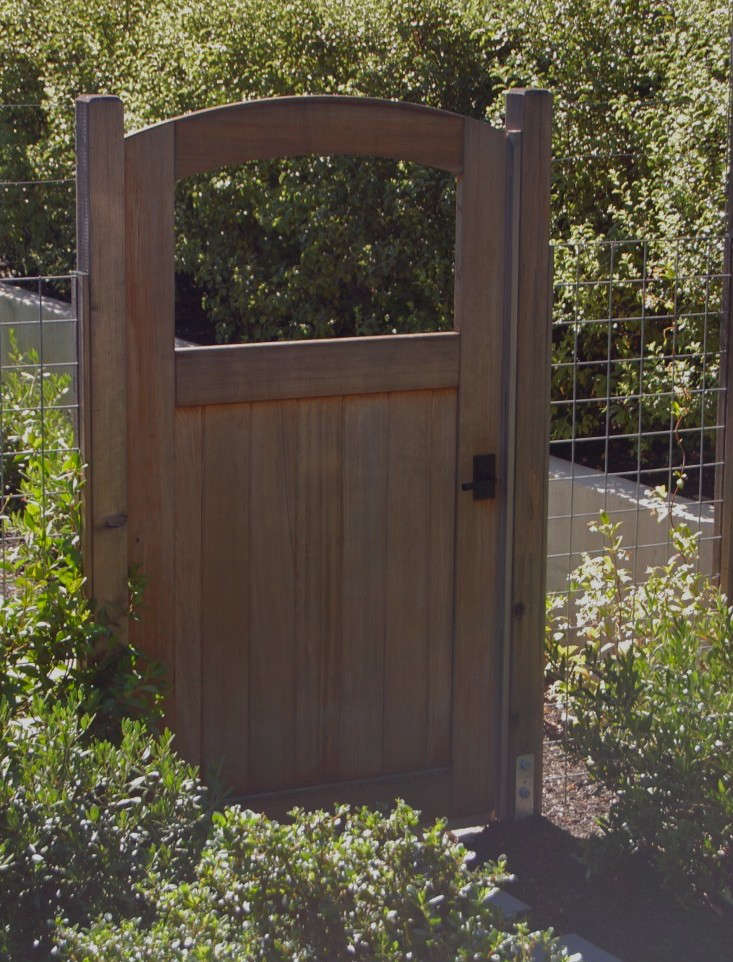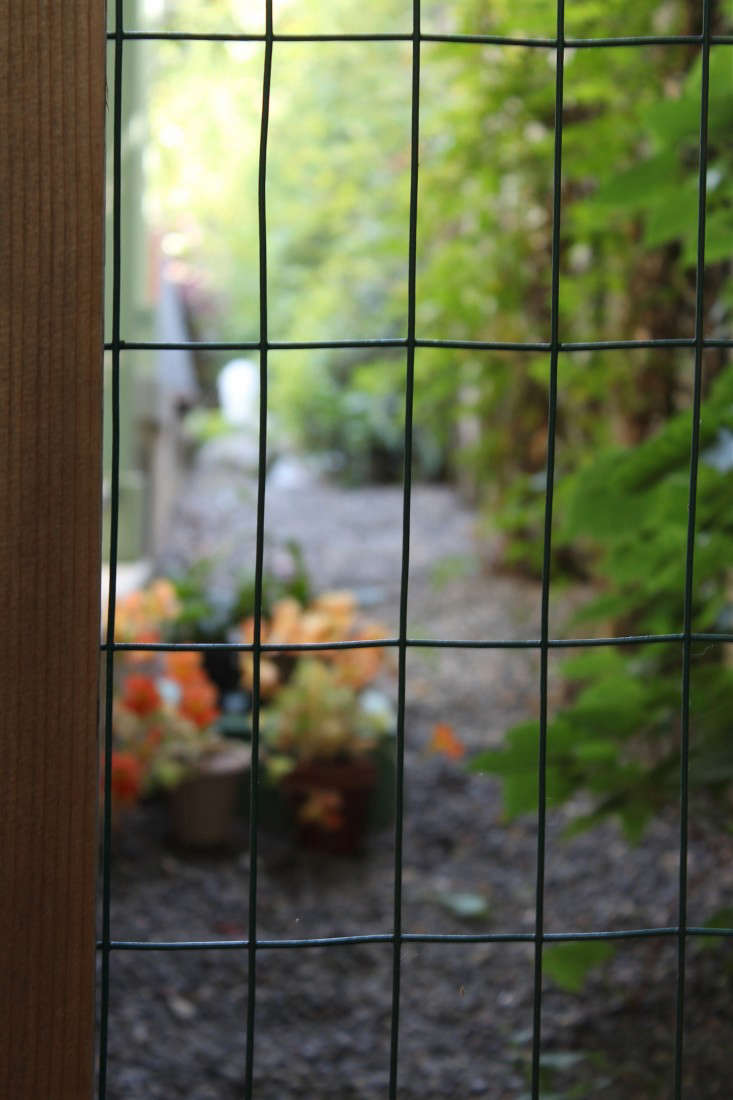What I’ve noticed more and more lately (and admired) are hog wire panels: used for fences, gates, and trellises. A mainstay on ranches for decades, hog wire panels been discovered by homeowners and landscape designers as an affordable, low-profile solution for maintaining a wide-open view while keeping animals out. They even possess a certain elegance.
Above: A see-through hog wire gate welcomes guests to a Michigan summer house by Kettelkamp & Kettelkamp. Photograph courtesy of Kettelkamp & Kettelkamp.
What are hog wire panels?
Also called cattle or livestock panels, hog wire panels are made of steel rods welded at every intersection and galvanized with a zinc coating. Feed- and livestock-supply companies sell different styles with different rod gauges. You’ll want a heavy gauge for a longer-lasting fence that won’t sag.
Above: Photograph by Michelle Slatalla.
How do you construct a hog wire fence?
Four-foot-high hog wire panels, a common size, come in 16-foot lengths, which are usually cut in half to make 8-foot sections. For posts, my local landscape contractor recommends using 4-by-4-inch pressure-treated Douglas fir, set in concrete. The stringers (or rails) at the top and bottom of the fence could be 2-by-4-inch pressure-treated fir or redwood. You can either staple the hog panels to the posts, or sandwich the panels between 1-by-1-inch pieces of redwood to hide the ends of the wire.
Most homeowners in my Northern California town are concerned about keeping deer out of gardens, so they often add a 2-by-12-inch kickboard at the bottom to make the overall fence 6 feet high. You need at least that to keep deer out.
Above: Hog wire fence and a see-through gate creates an sense of open space. Straight wire strung above the hog panels adds height to the fence. Photograph by Ellen Jenkins.
Above: Close-up shows 1-by-1-inch redwood strips hiding the sharp edges of the wire. Photograph by Nicole Franzen for Gardenista.
Which plants grow well on a hog wire fence?
One of the nice things about a hog wire fence is that it acts as a trellis. Almost any vining plant will grow on hog wire: jasmine, clematis, potato vine, hardenbergia, and many more. Climbing roses can be tied against the wire. You’ll have a living fence in no time, if that’s what you want. The one vine that doesn’t do well on metal wire is ivy, because it uses suckers to climb.
Above: Photograph by Marie Viljoen. For more of Marie’s garden, see Rehab Diary: A Year in the Life of a Brooklyn Garden.
How much does a hog wire fence cost?
If you’re using wooden posts and rails, a hog wire fence is a little more expensive than chain-link, but costs less than a solid cedar fence. The panels come in 16-foot lengths and in heights ranging from 3 to 8 feet. For example, a 16-foot-long fence of 4-foot-high panels costs about $50 per linear foot in my area. If you’re doing the labor yourself, the fence can be quite inexpensive.
If you hire a landscaper or fencing contractor, installing a 6-foot-high wood-and-wire fence costs from $35 to $50 per running foot, depending on labor costs in your area. If you omit the 1-foot stringer at the bottom and install a 5-foot fence, the cost per running foot is about $10 less: from $25 to $40.
Above: Photograph by Michelle Slatalla.
Hog Wire Fence Recap
Pros:
- Inexpensive–less than a wood fence
- Durable and strong
- Preserves the view
- Flexible–can bend
- Easy to install
- Keeps out larger animals such as dogs and deer
Cons:
- Edges can be sharp, and must be covered with trim
- Does not provide privacy
- Does not deter smaller pests
Looking for a fence to repel deer? For more ideas, see A Deer-Proof Edible Garden, East Coast Edition and Elegant Deer Fencing in the Hamptons. And browse our Hardscaping 101 archives.
Finally, learn how to successfully design a fence for any landscape or garden project with our Hardscaping 101: Fences & Gates guide.














Have a Question or Comment About This Post?
Join the conversation